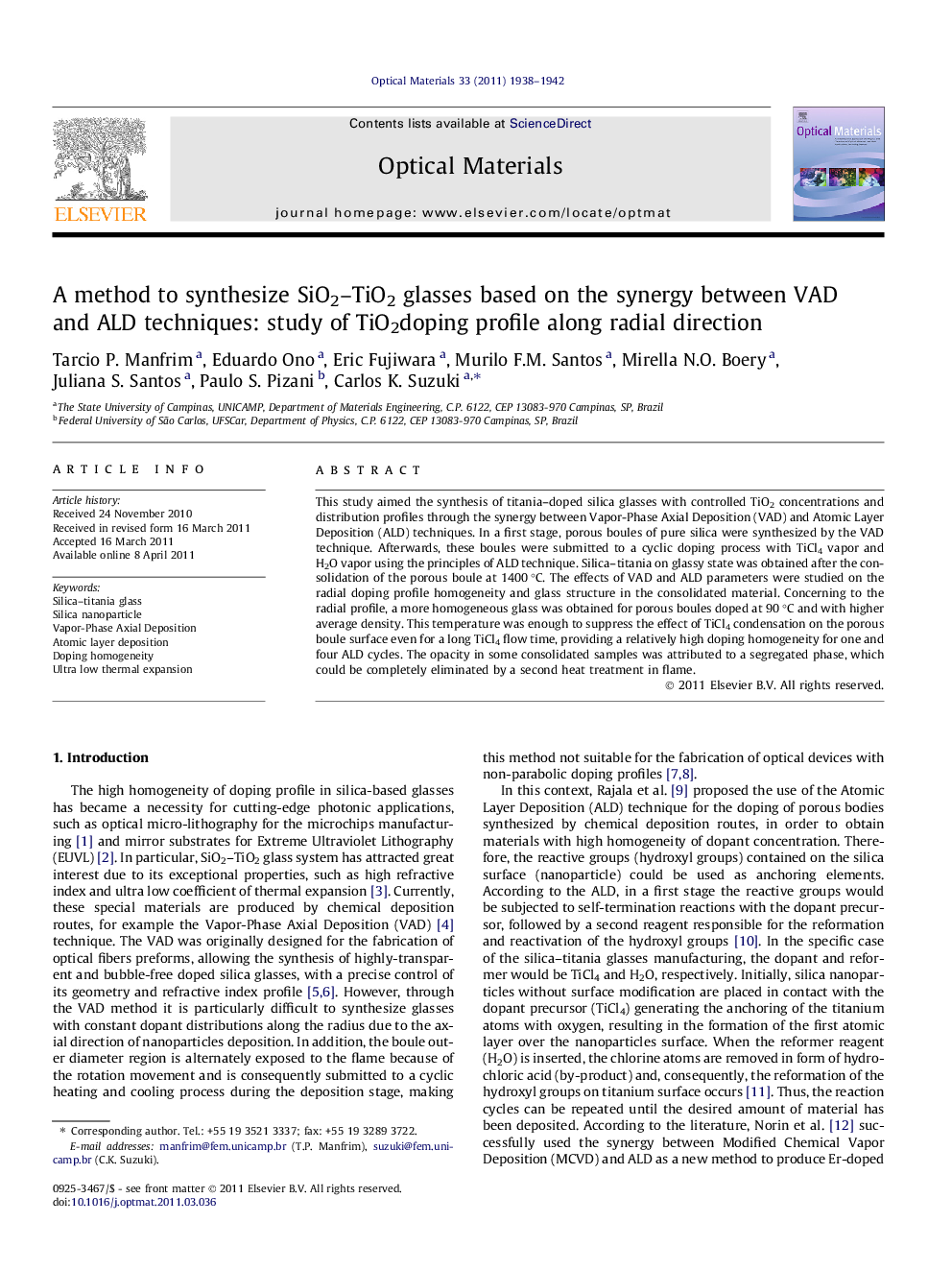| Article ID | Journal | Published Year | Pages | File Type |
|---|---|---|---|---|
| 1494811 | Optical Materials | 2011 | 5 Pages |
This study aimed the synthesis of titania–doped silica glasses with controlled TiO2 concentrations and distribution profiles through the synergy between Vapor-Phase Axial Deposition (VAD) and Atomic Layer Deposition (ALD) techniques. In a first stage, porous boules of pure silica were synthesized by the VAD technique. Afterwards, these boules were submitted to a cyclic doping process with TiCl4 vapor and H2O vapor using the principles of ALD technique. Silica–titania on glassy state was obtained after the consolidation of the porous boule at 1400 °C. The effects of VAD and ALD parameters were studied on the radial doping profile homogeneity and glass structure in the consolidated material. Concerning to the radial profile, a more homogeneous glass was obtained for porous boules doped at 90 °C and with higher average density. This temperature was enough to suppress the effect of TiCl4 condensation on the porous boule surface even for a long TiCl4 flow time, providing a relatively high doping homogeneity for one and four ALD cycles. The opacity in some consolidated samples was attributed to a segregated phase, which could be completely eliminated by a second heat treatment in flame.
Research Highlights► TiO2–SiO2 glass was formed by diffusion of TiO2 on silica matrix. ► Time required for the first cycle saturation is less than 30 min at 90 °C. ► Doping profile becomes more homogeneous with the increase of the average density.
